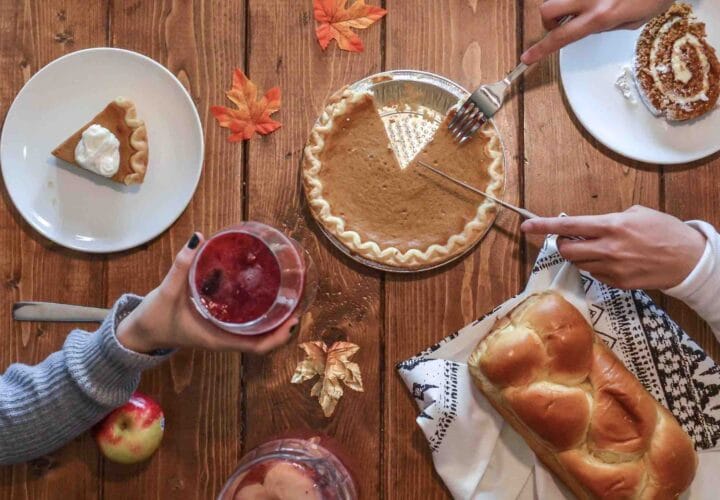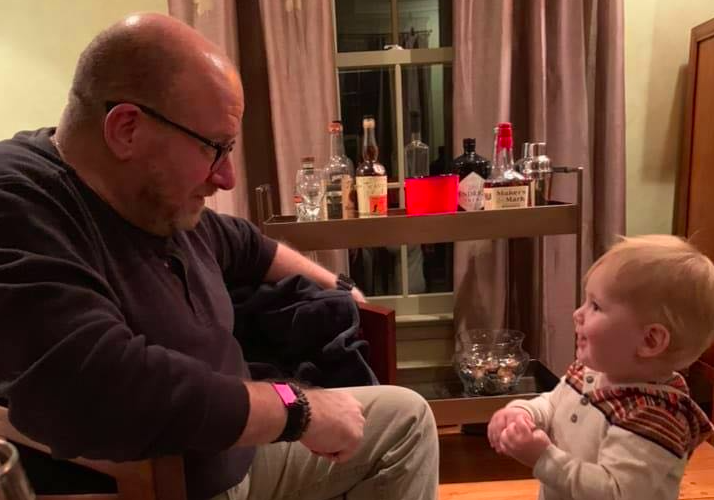Caring for someone with dementia this holiday season? Here are five expert-recommended dementia-friendly holiday activity ideas to try this Thanksgiving.
The holidays are often a joyous time filled with celebrations, and experts say tailoring activities to the changing abilities of family members living with dementia is key to creating a dementia-inclusive atmosphere for the holiday season. Here are a few expert-backed fall and Thanksgiving-themed activities for people with dementia and their caregivers.
1. Make a gratitude list.
Listing what you’re grateful for can come in any form. Grow your own “gratitude tree” by placing branches in a jar or vase, Dulaney recommended, and then writing about things to be grateful for on paper cut-out leaves to hang on the branches. This writing task can be a daily practice too, she said. Goodhousekeeping.com offers a handy list of do-it-yourself gratitude trees or pre-made ones.
People can also practice gratitude by thinking about what they’re thankful for before bed, journalling, or talking about things to be grateful for before meals, Dulaney noted. It can offer some peace of mind and help caregivers stay present for those in their care.
“Caregivers can get tied up, worrying about the future, being angry about something that’s in the past,” Dulaney said. “Thinking about something in the moment that we’re grateful for helps bring us into the moment. Anytime we focus on that and connect with the person with dementia on that level is positive and helpful for the relationship.”
“It can be really easy for caregivers to see everything that’s wrong, because everything is changing and it’s not what we would expect it to be,” she added. “But there are things to be grateful for, even if it’s just [seeing] the sun through a window.”
2. Try a simple cooking or meal-prep activity.
The changes that come with dementia can make it challenging for people to take part in holiday traditions that they have always enjoyed, like cooking and meal prep. But look for simpler ways to contribute and to make tasks simpler, like setting out crackers or veggies on a tray, as Dulaney suggested.
8 Good Activities for People Living With Alzheimer’s and Dementia
3. Take advantage of the autumn produce.
Make full use of autumn’s seasonal fruits, vegetables and foliage. Dulaney recommended arranging and rearranging a table centerpiece of fall produce, like persimmons, dried ears of corn, squash and pomegranates.
She added that raking and sweeping leaves can be another activity to consider, too, and people can collect fall leaves along the way to add to their table centerpiece. This can be a good way to stay active and to help with household chores.
4. Get creative.
The expressive arts, like music, painting and dance, have the ability to spur conversations, physical movement and long-buried memories. Consider creating a holiday playlist that includes old music that a person living with dementia loves. The Music & Memory Program put together a helpful guide on creating personalized music for loved ones with dementia.
When it comes to drawing, Sarah Dulaney, clinical nurse specialist at the University of California San Francisco, suggested painting pumpkins or rocks. Being Patient has also compiled a list of coloring books that could be good options for people living with dementia.
3 Creative Pursuits That Help People Cope With Cognitive Decline
5. Spend some time thinking back on old memories.
In rather mysterious but remarkable ways, the brain has the ability of preserving old memories as dementia progresses, and experts say looking back on the past can bring great meaning.
Creating an altar can be one way of reminiscing and appreciating old times, Dulaney suggested. This could include pictures of the person with dementia’s past, or photographs of loved ones who have died. Commemorate the deceased with things like their favorite food or a logo of the sports team they supported.
Not all people can celebrate the holiday season in-person, but there are still ways to observe the holiday remotely. For instance, Dulaney suggested starting a project remotely with a loved one living with dementia, like documenting their life story through the phone or a video call if possible: not only is it a meaningful activity, but it can also offer the person’s caregiver time to rest.
How Reminiscence Therapy Can Help People With Dementia Remember The Past



